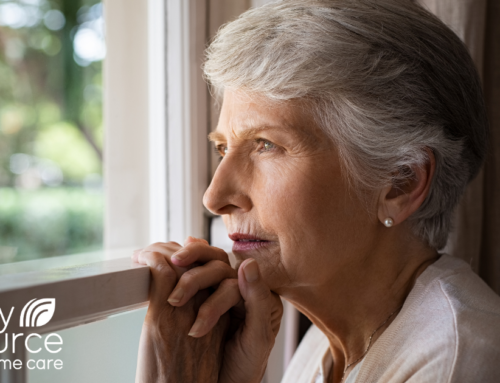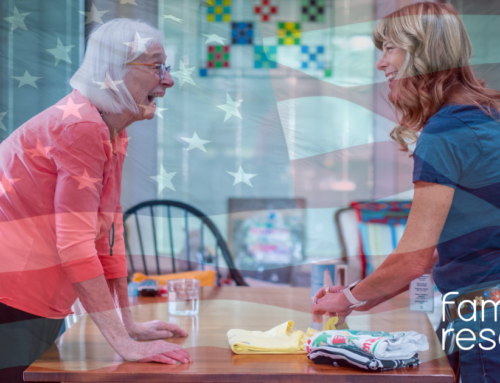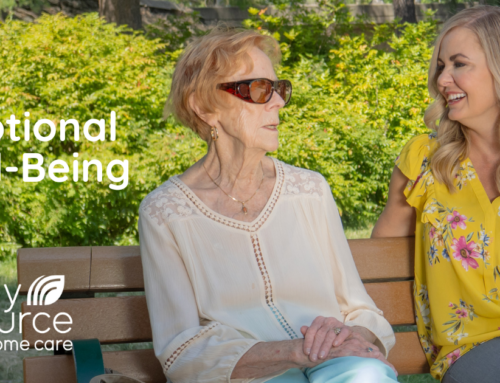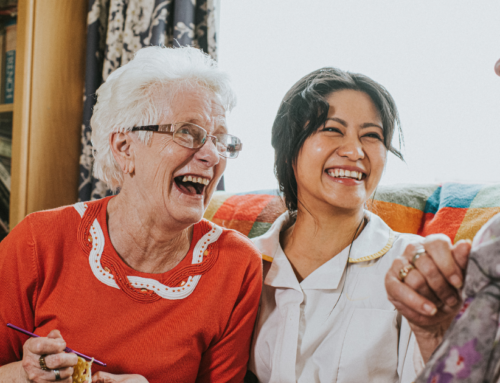With an elderly population rising so rapidly it’s sometimes called the “silver tsunami”, available resources in America’s healthcare continuum are being outpaced. It’s projected that by 2034 the elderly population will outnumber children in America, and nearly double in size by 2050. While this is partially due to advances in medicine leading to longer life, it still poses major social and economic implications when around 70% of people over the age of 65 will eventually require assistance caring for themselves.
In previous decades, the primary means of long-term care for seniors have been hospitals, nursing homes, and family caregivers. Since the rise in our elderly population is so high, however, it’s clear that changes to the spectrum of care options for elderly populations are required. Increasingly, the healthcare community is turning its sights on home care and home health care to help aid America’s seniors, reduce the burden on hospitals, and offer resources to family members providing care to their loved ones.
Home care is becoming an increasingly crucial resource for seniors with declining or impaired physical and cognitive abilities who need assistance with the activities of daily living, such as eating, dressing, hygiene, and toileting. Professional senior care aides greatly ease the burden on hospitals by providing non-medical care at home, reducing hospital readmission through transition care services, preventing emergency visits with measures like safety-proofing seniors’ homes and monitoring their condition, subsequently reducing medical facility visits for preventable accidents such as falls, burns, or other emergencies. A 2017 study that tracked 64,541 patients post-hospital discharge for one year found that “home health care independently decreased the hazard of follow-up readmission” and saved the hospital system nearly $6,500 per patient.
The increase in elderly Americans is coupled with a culture of increased mobility and separation where America’s adult children tend to be physically further from their aging parents than in previous generations. Still, with seniors’ desire to remain at home, unpaid family caregivers comprise 19% of the nation’s total population. The strain on family caregivers is profound when they provide 24.5 hours a week of care on average, and experience increased rates of physical pain and depression. Oftentimes, the complexity and intensity of care become too overwhelming or burdensome for family caregivers and they need extra help. Having a trained caregiver assist with these sorts of activities offers respite to family members and comprehensive, professional care to their loved ones.
Concurrently, a decrease in the dependence on hospitals and inpatient centers is occurring with more and more data on the benefits of “aging in place” and seniors’ desire to remain in the comfort of their own homes. The CDC defines aging in place as “the ability to live in one’s own home and community safely, independently, and comfortably, regardless of age, income, or ability level.” A 2005 AARP report states that environments that promote successful aging include “the ability to maintain three key behaviors or characteristics: low risk of disease and disease-related disability; high mental and physical function; and active engagement with life.” What’s more, “Aging in place offers numerous benefits to older adults—including life satisfaction, health and self-esteem—all of which are key to successful aging”.
Research shows that autonomy is an important factor in increased quality of life for the elderly. However, seniors with chronic conditions, and often comorbidities, may find it difficult to maintain independence on their own. Yet, a 2010 study found that 90% of seniors express wanting to remain in their homes as long as possible. Home care helps to allow seniors the ability to maintain independence in the place they most want to be. The help of a home care aide can not only assist in maintaining independence but also provide often much-needed companionship to a demographic who endemically experiences loneliness and isolation.
Home care is a resource that helps people across the spectrum of age and ability. Seniors are not the only demographic that benefits. There are many younger people with disabilities, declined cognitive capabilities, or other chronic issues that require care. In-home care is a crucial element in the healthcare continuum that saves on costs of institutionalized care, paves the way for more accessible caregiving jobs, promotes economic growth by giving family caregivers support while remaining in the workforce, and helps millions of seniors live longer with comfort and dignity.





